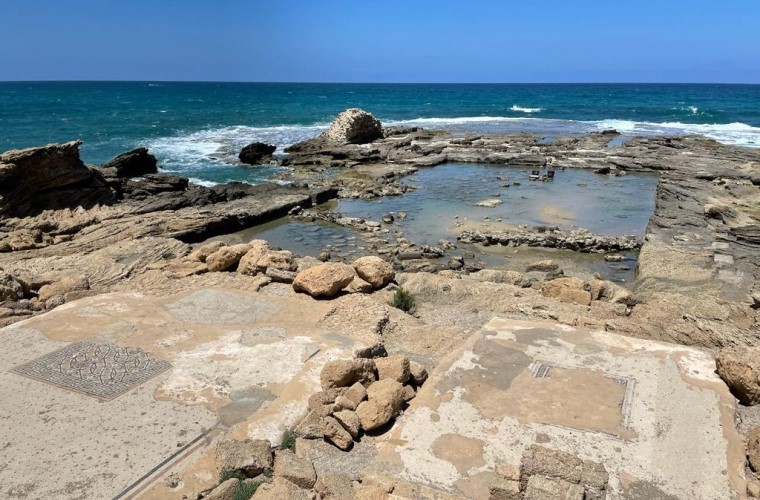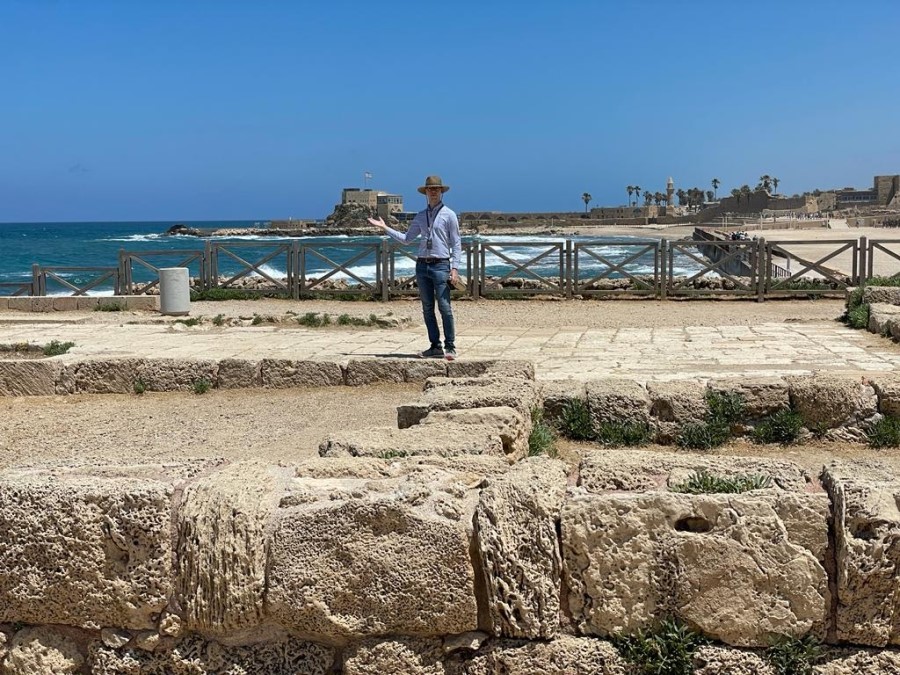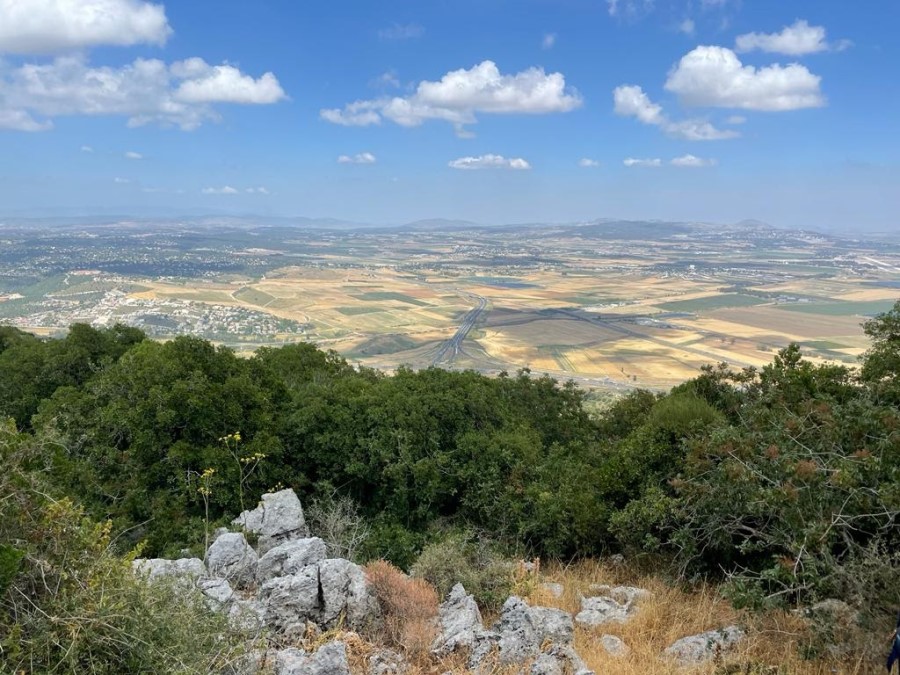Shalom!
We started heading north toward Galilee today but made some stops along the way in the Coastal Plain and Jezreel Valley before arriving to our hotel in Nazareth. It was a temperate and breezy day—a nice change of pace from hot and barren desert! Here are a few highlights:
We started in the morning visiting the uncovered ruins of Caesarea, another one of Herod the Great’s marvelous construction projects. Despite its fair amount of coastline, ancient Israel lacked a truly good port with a natural harbor. Ambitious Herod changed that situation by building an artificial harbor and then a city to function as a world-class port; Herod named the new port city “Caesarea” in honor of emperor Caesar Augustus. Caesarea was essentially a Gentile/Roman city within Judea, though Jews also lived there. Caesarea is mentioned several times in the book of Acts (Acts 8:40; Acts 10:1-48; Acts 12:19-23), especially in dealing with the apostle Paul’s journey to Jerusalem (Acts 23:23-26:32). The picture above is of me standing in the palace audience chamber in which Paul once gave his defense/testimony before governor Festus and King Herod Agrippa II (Acts 26:1-32).
We journeyed from Caesarea on the north-central coast (the Sharon Plain) a bit inland to Mount Carmel. Though we might often think of Carmel as a singular and solitary mountain, Carmel is actually a ridge line extending from the northern hill country of Samaria to the coast, with the Jezreel Valley sitting on Carmel’s eastern side. Mount Carmel is most famous for Elijah’s contest with the prophets of Baal (1 Ki 18:20-40), an event which probably took place at the site on Carmel known today as Muchraka (“place of burning”). However, Carmel is spoken of in other places in Scripture, especially in connection to beauty and abundance (e.g. Song 7:5; Isa 35:2; Jer 50:19). The picture above is from Carmel looking out over the Jezreel Valley.
One of our last stops today was to Tel Megiddo, the site of another important fortress-city in OT times. Megiddo was an extremely lucratively positioned settlement: it had a nearby and consistent water source, it sat atop a hill at a chokepoint of the International Coastal Highway (the Megiddo Pass through the Carmel mountain range), and it lay close to the abundantly fertile Jezreel Valley. Consequently, Megiddo was fought over many times; archaeologists have discovered twenty-six layers of occupation at the tel, meaning that Megiddo was destroyed twenty-five times and then rebuilt afterwards! King Solomon specifically chose Megiddo to serve as one of his special fortresses, and a six-chambered Solomonic gate is evident at the site along with a palace and possibly two stables (1 Ki 9:15). Though Megiddo waned in importance after the fall of the northern kingdom in 722 BC, Megiddo and its nearby plain (the Jezreel Valley) will be important again in the future: the name of the site of the final battle before Christ’s return, “Armageddon,” comes from Hebrew “Har Megiddo” meaning “hill of/mountain of Megiddo” (Rev 16:13-14, 16).




